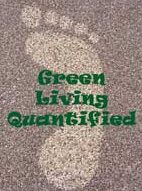Our Experience
Investing in energy efficiency transforms your home into a more affordable and comfortable place for now and the future. As shown in the graph below, I reduced my energy costs to half—or even less—compared to neighbors with similarly sized older homes from the 1940s. This was achieved through several measures: caulking windows and doors, insulating HVAC ducts, sealing the home envelope, adding insulation where needed, upgrading to an ultra-efficient furnace, replacing a few windows, and lowering temperatures while away or sleeping. Upgrading my furnace alone cut both gas and electricity usage by half. However, today’s heat pumps are even more efficient, outperforming my 95% efficient furnace by several times. Full disclosure: I lived in this Wisconsin home part-time due to my job being in another state from my husband’s. For a detailed video showcasing our energy audits and improvements, scroll to the bottom of this page.

Your Choices
I discovered that conducting an energy audit was invaluable in identifying significant issues in my home that I couldn’t detect on my own. Alternatively, you can tackle the projects you’re aware of first and then perform an audit to uncover anything you might have missed. An energy auditor can also identify safety concerns in your home, such as asbestos or potential mold problems.
If you live in an apartment or condo—kudos to you! You’re already using less energy than many others. Give yourself a pat on the back! This section can help you make your space more comfortable by reducing drafts and improving temperature control. For additional tips on saving money and energy, check out Reduce energy use.
The table below highlights enhanced home efficiency measures designed to minimize air leaks, improve insulation, lower heating and cooling expenses, and decrease overall energy consumption. Since homes differ in size, total energy loss is represented as percentages.
| Action Choices (with Links) | Estimate of Total Loss* | Recommended Actions |
| Find and seal air leaks | 30% (heat) | Caulking windows, sealing doors, filling gaps in protrusions. |
| Add insulation | 45% (heat) 25% (cooling) | Insulating for heat losses through wall, roof and floor; or for cooling losses through roof and walls. |
| Reduce energy use | Winter: 2% per -degree Summer: 3-5% per + degree | Setting thermostat lower/higher 24 hours, or when away or asleep; using fans effectively. |
| Purchase efficient windows | 20% (annual energy) | Purchasing new windows can provide insulation and protect from solar radiation; cheaper recommendations also listed. |
| Seal ducts, insulate heating pipes | 15-20% of air passing through ducts | Sealing ducts with mastic or UL-181b duct tape or aeroseal. Insulating radiator pipes with foam or fiberglass insulation. |
* Source: Jennifer Thorne Amann, Alex Wilson, Katie Ackerly (2012) Consumer Guide to Home Energy Savings, 10th Ed., New Society Publishers, Gabriola Island, BC Canada.
Our Experience: AN ENERGY EFFICIENCY VIDEO
Here is our story (24-minute video) on You-Tube of making 2 homes more energy efficient and comfortable, and shows how we saved money relative to our neighbors.
